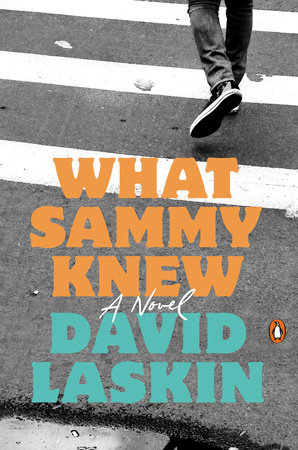What Sammy Knew: A Novel
- By David Laskin
- Penguin Books
- 288 pp.
- Reviewed by Chris Rutledge
- March 19, 2021
Clichés and stereotypes weaken this otherwise earnest debut set in 1970s New York.

In David Laskin’s What Sammy Knew, a coming-of-age novel set in a very special time — the early 1970s — Sammy Stein is a 17-year-old high school senior beset by all the typical problems and engaging in all the usual activities of a teen. He goes to parties, worries about girls, fights with his family, takes part in extracurriculars, and frets about college.
Sammy does so in suburban New York on what he and others refer to stereotypically as “Lawn Guyland.” Which means he is a stone’s throw, or at least a commuter-train ride, away from the sight and sounds of New York City — THE City — which held all of the drama and allure back then that it does today, but with an added element of political fire.
We begin in December 1969, when Sammy is dragged to a New Year’s Eve party by a friend. There, he re-encounters an older idol of his, Richard, who has grown up and moved to the idyll on the other end of the Midtown Tunnel. Sammy is enraptured by Richard’s story, as well as by his access to drugs. More significantly, Sammy is smitten by Richard’s acquaintance Kim, to whom he gives his virginity and his heart.
Being that this is an earnest tale set in a revolutionary age, it’s necessary that Sammy and Kim soon get into a fight with his parents. It appears that the elder Steins are firing their longtime maid, Tutu, “for her own good.” She has grown frail, and rather than find ways to lighten her load, they have decided to offload her entirely, “allowing” her to “retire” without an income to the company of family in Harlem.
Sammy and Kim are rightly indignant over this injustice and use their anger to challenge the Steins — and, by extension, society — over a host of inequities. Storming out of Sammy’s abode (with a stopover in Kim’s house, home to another set of parents who “just don’t get it”), the teens make their way to Manhattan and Richard.
From there on, much happens. They immerse themselves in a world of Andy Warhol hangers-on, Black Panthers, radical feminists, and other revolutionaries whose politics align with theirs. In the background of all of this is Sammy’s ongoing contact with Tutu and her grandson Leon, who play an increasingly important role in the narrative, especially as it draws to its dramatic close (I’m loath to give too much away, but suffice it to say, revolution is in the air).
The novel employs a large cast of characters, each of whom gets an opportunity to express a point of view. We are ferried along by Sammy as he falls in love; by Kim as she reacts to that love and her own political awakening; and by Richard as he explores the demimonde and his own sexuality. Even Warhol’s muse Nico makes an appearance. The effect of this could be to show, “Rashomon”-style, how perspective impacts opinion. Unfortunately, the overly dense plot keeps us from going deep.
Instead, the characters fall into stereotypes. Sammy is a young Nick Carraway, drawn to and repulsed by Richard’s reinvented Gatsby. This comparison is not mine. Sammy makes frequent allusions to The Great Gatsby, even calling his town Fat Neck, which is odd given that Fitzgerald himself referred to Great Neck and its surrounding communities as West and East Egg. Why not just go along with that device?
Sammy is also a very typical do-gooder teen fired up by injustice and hormones. He struggles with the dance between these two forces, wanting to be with Kim, but uncertain if her radicalization is for the best (for both of them).
For her part, Kim is portrayed as a standard-issue hippie and deserves more time to evolve. Sammy’s parents are a pair of dime-a-dozen hypocrites. And Richard, while more interesting than some of the others, is a commonplace heel.
Worse, the one-dimensional characters of color undercut author Laskin’s clear interest in racial justice. Tutu is every put-upon maid you’ve ever read about; Leon is a near-saint, singing in the choir, dreaming of a music career, and earning every penny he can to support his grandmother’s wish for a nice tombstone when she’s gone. Both are blatantly exploited by the white people around them, and while Tutu seems to see this, Leon remains blindly optimistic up to the cruel end. For a book concerned with fighting racism, one would think the two main characters of color would be more complex.
While there’s likely a meaningful novel in here somewhere — one that explores the politics of a volatile era and its impact on those involved — the one we’re presented with drowns its own message amid a mix of flat characters and high-school-level politics.
Chris Rutledge is a husband, father, writer, nonprofit professional, and community member living in Silver Spring, MD. Besides the Independent, his work has appeared in Kirkus Reviews, American Book Review, and countless intemperate Facebook posts, which will surely get him into trouble one day.
_1_80_126.png)
